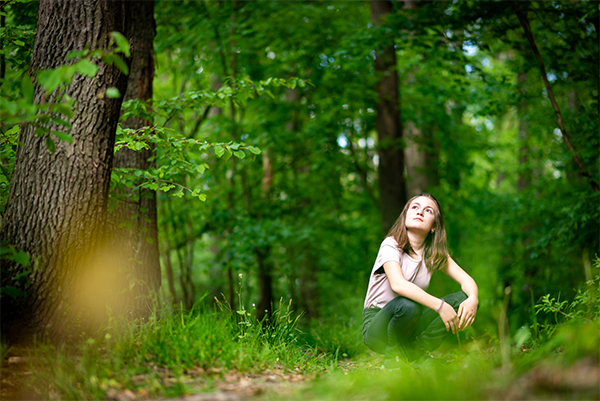STEM Education for a Sustainable World – Sharing Inspiration 2021
April 22 was Earth Day and was also the second quarterly Sharing Inspiration conference 2021. Aptly, the theme was "STEM Education for a Sustainable World." More than 100 people logged in to listen to a keynote speech from European Commissioner Vladimir Garkov and STEM stories from the classroom.

Peter Balyta, Ph.D., opened the conference with references to 'Star Trek' and encouragement for us all in these pandemic times. The corporate vice president of academic engagement and president of the Education Technology business at Texas Instruments (TI) reminded us that T3 Europe was in its 25th year and that one of the sustainable development goals was ‘quality education’. Something espoused by TI is its commitment to fostering an inclusive and equitable quality education for all and providing support for the T3 teacher network.
Keynote speech: EU project ‘Education for a Green Transition’
Dr. Vladimir Garkov presented the keynote speech and drove home the message of sustainability by fitting it into the Key Competences Framework of the European Union’s project ‘Education for a Green Transition.’ There were strong references to the thinking skills within these competences:
- Convergent or analytic thinking, as needed within the STEM subjects.
- Divergent or ‘systems’ thinking. Thinking about all the possible outcomes and how different parameters are inter-related, particularly amongst the sustainable development goals.
- Critical thinking — being able to draw conclusions and make judgements from available evidence, and being able to deduce and induce.
- Creative thinking, so valuable in entrepreneurial activity, by linking ideas in novel ways to come up with new solutions.
Garkov recommended building bridges between culture and science and, with the multicultural background of T3 Europe, we are well placed to do that. Above all, we should make sustainability a cornerstone of our daily lives and not relegate it to occasional attention in STEM lessons.

Stories from the classroom
Feedback and control played a significant part in all the presentations which followed. All of them showed how a representational model could bring to life the otherwise abstract modeling of science and mathematics. All the presenters declared that previously unenthusiastic students had found that they could engage with STEM ideas at a concrete level.
Cathy Baars showed how her students had developed a wide-ranging project on recycling waste materials using STEM technology. She used a technique of skill-sharing known as SCRUM which can be found in the material within the T3 resources portal. Baars began the project with lessons on creating art forms using Python programming, thus showing how art, creativity and technology can all feature in a STEM project.
Hans-Martin Hilbig and Veit Berger collaborated over a project for controlling the environment in a classroom, since you cannot deliver ‘quality education’ in an unhealthy environment! Berger had developed a beautiful model of the classroom using sensors to provide feedback and control to a servomotor connected to the door. The project provided plenty of scope for analytical, creative, critical and divergent thinking!
Alexandre Gomes presented his students’ solution to the problem of a disabled person steering a wheelchair that won them a trip to NASA. There is no doubting the enthusiasm his students felt for this project which promotes healthy lives and wellbeing for all with a caveat about proliferating technological developments. When COVID-19 is over, his students will hopefully be able to visit NASA.
Alexandre Técher lives on a sunny island in the Indian Ocean and made use of this with his solar tracker project. Ultimately, the sun provides all our energy needs (arguably fission energy as well). Being able to make best use of this energy resource is important to keep the number and size of solar panels to a minimum. This project involves the construction of a model in the classroom and there are strong links to all the elements in STEM. Técher has also welcomed the notion that students can make mistakes with their solutions and uses this to develop their attitudes towards learning.
Christine Buerki drew proceedings to a close with a presentation about the real challenges behind pursuing the U.N. development goals on sustainability. After carefully defining what is meant by ‘living sustainably’ she went on to the real cost of living in a world where production and consumerism play such big roles. It is staggering to think that 55,000 tons of rock have to be carved out of the Earth and processed with 400,000 liters of water to make a single car. And this does not include the cost of transporting materials, the construction of the assembly plant or the cost of maintaining the humans or robots to assemble these cars.
Discussion on quality education
Hans-Martin posed a question about what was meant by a quality education. Could participants paste three attributes which they felt provided a quality education? We use the term ‘quality education’ all the time, but rarely do we stop to consider exactly what we mean by it. Three listeners from around the world rose to the challenge of trying to sum up quality education in three words.
Tom Reardon (U.S.A.) — three attributes: collaborative, interactive, applicable
Cathy Baars (The Netherlands) — three qualities: engaging, stimulating and for both sexes
Rustamova Gunay (Republic of Azerbaijan) — three features: skills with knowledge and creativity
The notion that a quality education should not be gender biased can be explored in the recent blog post 'You go girl! The experiences of women in STEM.' Here you will find many of the conference contributors referenced as they seek to include both boys and girls in their teaching. It goes without saying that it is impossible to sum up what we mean by quality education in three words. But I think we have gone a long way towards understanding what we mean by a quality STEM lesson:
- Modelling, and in particular representational models which serve to engage, stimulate and allow collaboration or teamwork.
- Promotes thinking skills, in particular analytical creative critical and divergent thinking.
- Should promote inclusion of both genders with interactive and relevant content fit for the digital world of the 21st century.
Again, many thanks to all our contributors of the conference. We shall take many of these ideas forward into the next two sessions of Sharing Inspiration in September and November. Watch out for the call for papers and presentations.
- Join our third quarterly conference ‘Computational Thinking and Coding in the Classroom’ on Sept. 16
- View the recording of the second quarterly conference ‘STEM Education for a Sustainable World’
